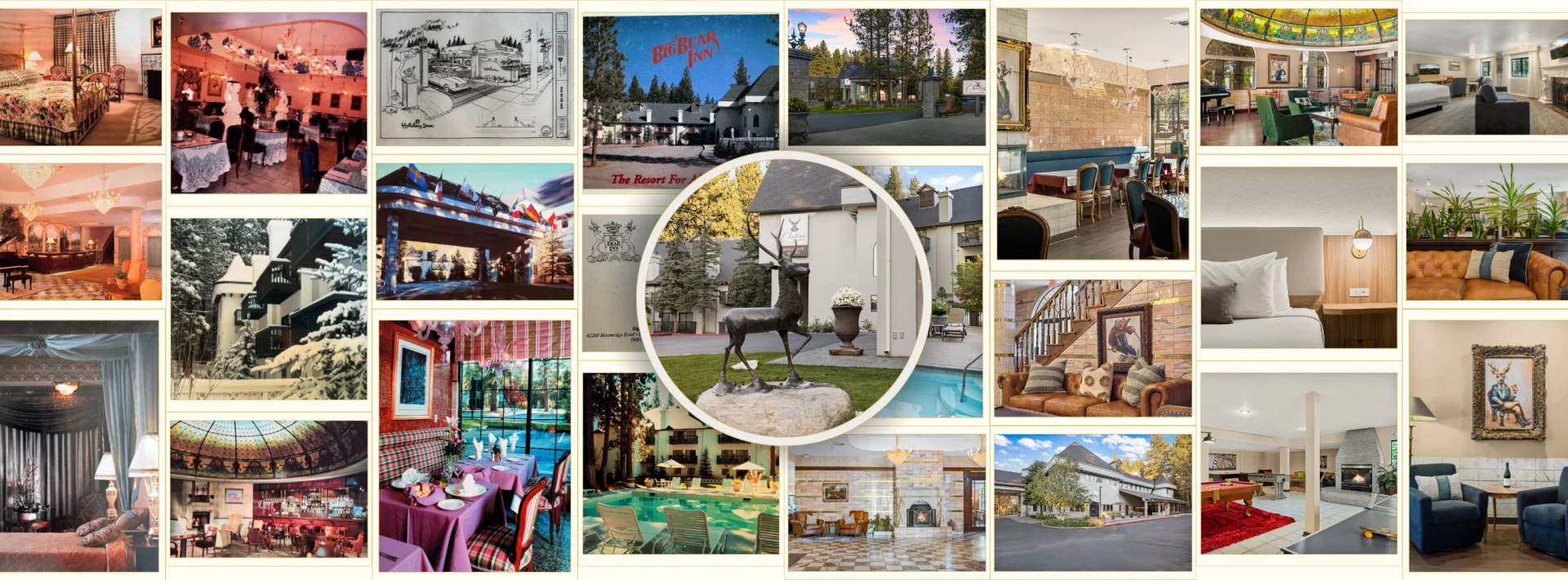The Legend of the Aristocratic Wildlife of Big Bear Mountain.
Big Bear Mountain, originally a thriving gold mining town in the 1800s, was once a sanctuary where wildlife and humans coexisted harmoniously. However, as the town expanded, the animals were gradually pushed to the edges of Big Bear. A small group of animals, said to have gathered on what is now the grounds of Chateau Big Bear, observed the opulent intruders with curiosity. In folklore, these animals took on human form, adopting aristocratic attire to mimic their new neighbors, creating their own noble society.
This “Animal Aristocracy” vowed to protect the mountain and its wildlife. Yet, as Big Bear transformed into a popular year-round destination, the noble creatures were eventually driven away, their society fading into legend.
In 1987, Mr. Paul Rizos, a wealthy hotelier and immigrant, purchased the land and was reportedly inspired by the legacy of these noble creatures. Guided by an otherworldly calling, he built Chateau Big Bear in homage to this mystic past, adorning it with millions of dollars in European art, including a grand Tiffany dome, now displayed in Tiffany’s Bistro and valued at over $400,000. The Chateau became known for high-society gatherings and operatic events, embracing its historic character.
Over the following decades, ownership of the Chateau changed hands, with some of its grandeur and artwork lost along the way. In 2021, an Australian family, also hoteliers, acquired the property. Inspired by dreams of the noble beings who once roamed the land, they honored this unique history by showcasing representations of the Animal Aristocracy throughout Chateau Big Bear. These noble figures now stand as symbols of the mountain's heritage, reminding guests to respect all beings and live in harmony with nature.


